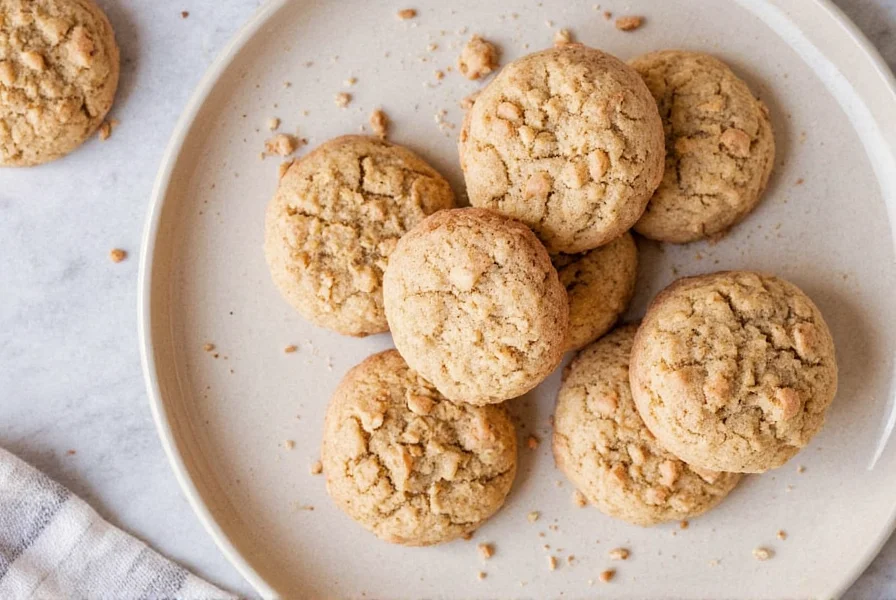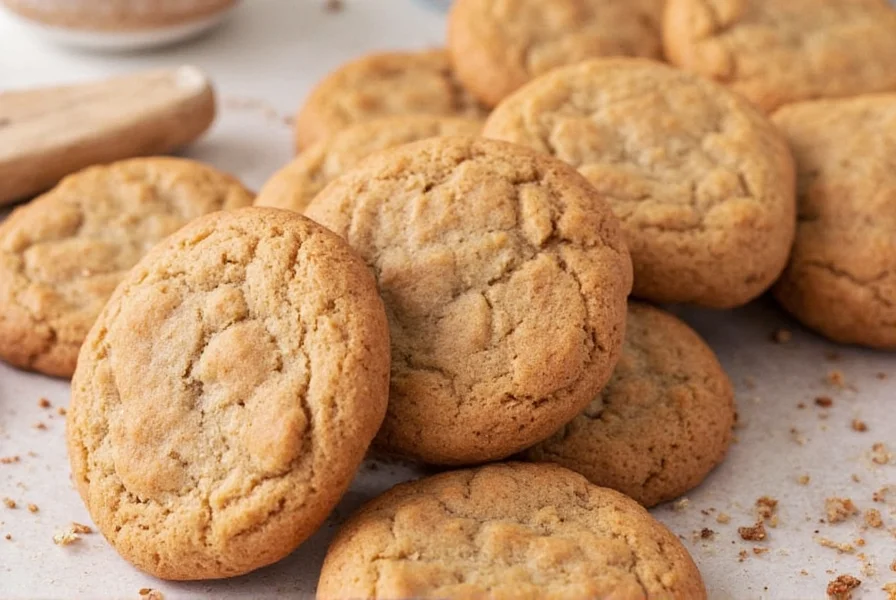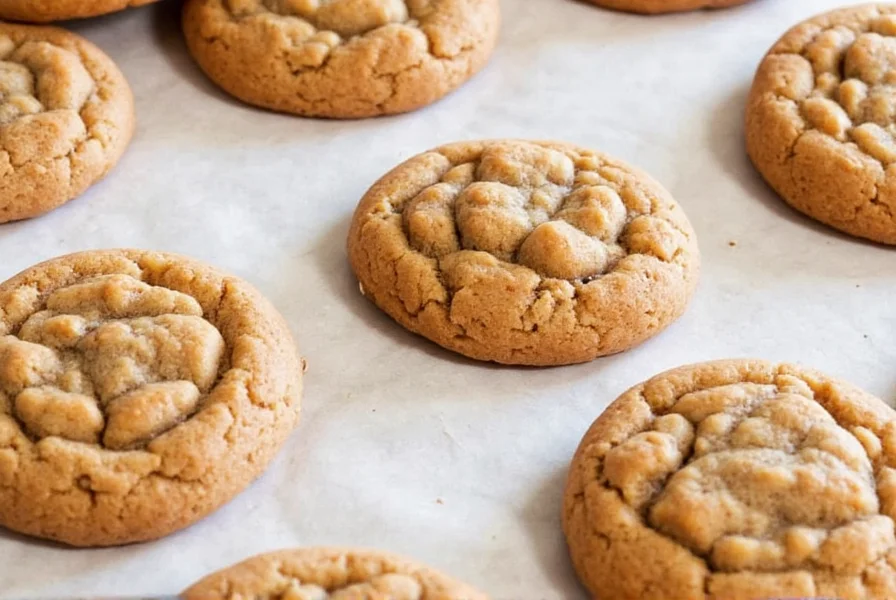Nothing compares to the warm, spicy aroma of freshly baked ginger cookies that stay delightfully soft for days. While traditional ginger snaps are celebrated for their crisp texture, many home bakers specifically seek that perfect chewy-center-with-crisp-edges texture in their ginger treats. Understanding the science behind cookie texture transforms your baking from hit-or-miss to consistently perfect.
The Baking Science Behind Soft Ginger Cookies
Ginger cookies become hard primarily through moisture loss during and after baking. The key to softness lies in understanding three critical factors: ingredient ratios, baking chemistry, and storage methods. Unlike crisp cookies that benefit from higher white sugar content and longer baking times, soft ginger cookies require careful moisture management at every stage.
Molasses—the essential ingredient in authentic ginger cookies—contains invert sugars that attract and retain moisture from the air, a property called hygroscopicity. This explains why properly made ginger cookies actually soften over time rather than hardening like many other cookie varieties.
Essential Ingredients for Perfect Softness
Not all ginger cookie recipes create soft results. The magic happens through specific ingredient proportions and quality:
| Ingredient | Role in Softness | Optimal Ratio for Soft Cookies |
|---|---|---|
| Brown sugar | Higher acidity and moisture content than white sugar | 2:1 ratio with white sugar |
| Molasses | Hygroscopic properties retain moisture | ¼ cup dark molasses per batch |
| Butter | Proper creaming incorporates air for tender texture | 1 cup unsalted, room temperature |
| Corn syrup | Prevents sugar crystallization for chewiness | 1-2 tablespoons (optional) |
Step-by-Step Soft Ginger Cookie Recipe
This tested recipe consistently produces soft ginger cookies with crackled tops and chewy centers. Yields 24 cookies.
Ingredients
- 2 ¼ cups all-purpose flour
- 2 teaspoons ground ginger
- 1 ½ teaspoons cinnamon
- ¼ teaspoon cloves
- ½ teaspoon baking soda
- ¼ teaspoon salt
- 1 cup packed dark brown sugar
- ½ cup granulated sugar
- ½ cup unsalted butter, room temperature
- ¼ cup dark molasses
- 1 large egg
- 1 teaspoon vanilla extract
Method
- Whisk dry ingredients (flour through salt) in medium bowl
- Cream butter and sugars until light and fluffy (3-4 minutes)
- Mix in molasses, egg, and vanilla until combined
- Gradually add dry ingredients until just incorporated
- Chill dough minimum 2 hours (essential for texture control)
- Preheat oven to 350°F (175°C) with rack in center position
- Roll tablespoon portions into balls, then roll in sugar
- Place 2 inches apart on parchment-lined baking sheets
- Bake 10-12 minutes until edges are set but centers look soft
- Cool on baking sheet 5 minutes before transferring to wire rack

Why Your Ginger Cookies Turn Out Hard (And How to Fix It)
Even with a good recipe, several common mistakes sabotage soft ginger cookies:
Overbaking by Just 60 Seconds
The difference between soft and hard often comes down to a single minute in the oven. Remove cookies when centers still appear slightly underdone—they'll continue cooking on the hot baking sheet. For soft ginger cookies, 10-12 minutes is the critical window at 350°F.
Incorrect Flour Measurement
Too much flour is the #1 cause of dry, hard cookies. Always spoon flour into your measuring cup and level off—don't scoop directly from the bag. Better yet, use a kitchen scale (125g per cup of all-purpose flour).
Using Light Molasses
Dark or blackstrap molasses provides superior moisture retention compared to light varieties. The stronger flavor balances perfectly with the increased sugar content needed for softness.
Proven Storage Methods for Lasting Softness
Even perfectly baked soft ginger cookies will harden if stored improperly. These professional techniques maintain softness for 10-14 days:
- Apple Slice Method: Store cookies with a slice of fresh apple in an airtight container. The cookies absorb moisture from the apple.
- Bread Trick: Place a small piece of bread in the container—the cookies will draw moisture from the bread.
- Airtight is Essential: Any exposure to air accelerates hardening. Use containers with tight seals, not cookie jars.
- Freeze for Longevity: Freeze baked cookies between parchment paper layers for up to 3 months. Thaw at room temperature.

Successful Ingredient Substitutions
Dietary needs don't have to mean sacrificing softness. These substitutions maintain texture:
- Gluten-Free: Use 1:1 gluten-free flour blend plus ¼ teaspoon xanthan gum
- Dairy-Free: Substitute butter with refined coconut oil (not virgin) for neutral flavor
- Egg-Free: Replace egg with ¼ cup unsweetened applesauce plus ½ teaspoon baking powder
- Lower Sugar: Reduce total sugar by ¼ cup but add 1 tablespoon corn syrup to maintain moisture
Advanced Techniques for Perfect Texture
Professional bakers use these additional methods to guarantee soft ginger cookies:
- Double-Chill Method: Chill dough before portioning, then chill portioned balls 15 minutes before baking for thicker, softer cookies
- Hot Start Baking: Begin baking at 375°F for 3 minutes, then reduce to 325°F to set structure before moisture evaporates
- Steam Injection: Place ice cube in oven (on bottom rack) during first 3 minutes of baking to create steam environment
Frequently Asked Questions
Why do my ginger cookies get hard after cooling?
Ginger cookies harden primarily through moisture loss. This happens when there's too much flour, insufficient brown sugar/molasses, overbaking, or improper storage. The hygroscopic properties of molasses should actually make ginger cookies soften over time—if they're hardening, your recipe likely has an imbalance in the sugar-to-flour ratio or you're baking too long.
Can I make soft ginger cookies without molasses?
Traditional soft ginger cookies require molasses for both flavor and texture. Without molasses, you'll lose the hygroscopic properties that keep cookies soft. If you must substitute, use ¼ cup honey plus 2 tablespoons blackstrap syrup for partial moisture retention, but expect texture differences. For authentic soft ginger cookies, dark molasses is essential.
How do I soften already hard ginger cookies?
Revive hard ginger cookies by placing them on a microwave-safe plate with a damp paper towel for 10-15 seconds. Alternatively, store hard cookies in an airtight container with a slice of apple or bread for 24 hours—the cookies will absorb moisture from these items. For best results, freeze cookie dough balls instead of baked cookies for future soft batches.
Does chilling cookie dough really make softer cookies?
Yes, chilling ginger cookie dough significantly improves softness. The 2+ hour chill time allows flour to fully hydrate and fats to solidify, which slows spread during baking. This creates a more tender crumb structure. Professional bakers often chill dough 24-48 hours for optimal texture development and flavor complexity.











 浙公网安备
33010002000092号
浙公网安备
33010002000092号 浙B2-20120091-4
浙B2-20120091-4